66 F. high in the Twin Cities Friday.
70 F. average high on September 20.
66 F. high on September 20, 2012.
.04" rain fell yesterday.
3:44 PM. Fall officially arrives at 3:44 PM Sunday as the sun's direct rays fall on the equator.
60s today and tomorrow; low 80s may return by next Friday.
Typhoon Usagi heading toward Hong Kong. Details below.
Sweatshirt Weather
NOAA's
Climate Prediction Center is predicting a warmer than average October
for much of America, including Minnesota. The first frost comes later in
autumn now, extending allergy season nationwide. In fact the Asthma and
Allergy Foundation of America says that rising temperatures and CO2
levels are extending ragweed season over northern cities by up to a
month. Yes, those extra lukewarm days come with a price it seems.
At
least we didn't make the Top 10 Worst Cities for Allergies. Wichita has
the dubious distinction of being number one, according to Live Science.
Details below.
A refreshing weekend is shaping up - sunshine
returning today with highs in the 60s and less wind than yesterday. A
fine day to do yard work, wash the car, take apart the dock, or better
yet find a soft couch and fall into a college football coma.
70s
return next week, maybe 80F by Friday, but the pattern still doesn't
favor significant rain. For that we'll have to get much colder air
flowing out of Canada. A large temperature gradient or contrast usually
whips up the big storms with heavy, sustained rains, as opposed to
garden-variety T-storms.
I don't see a real storm looking out 2 weeks.
The 10 Worst U.S. Cities For For Fall Allergies.
Happy we didn't make this list, at least not this year. Frosts are
coming later in the fall, which is good news for many, but not for
allergy sufferers. Here's a clip from a story at
Live Science: "..."
The
frosts are coming later, so the ragweed pollen season is later, and is
lasting longer, because it is not killed off by frost," said Dr. Richard
Weber, a professor of medicine at the National Jewish Health Medical
Center in Denver, Colo. and the University of Colorado, Denver, who was
not involved in producing the report. "And while this does not apply to
everything, we are seeing probably longer seasons across the country,
and are seeing higher peaks of pollen." ....Here are the top 10 worst
cities for this year, as ranked in the report:"
1. Wichita, Kan.
2. Jackson, Miss.
3. Knoxville, Tenn.
4. Louisville, Ky.
Cool Weekend - Flashes Of Summer Return Next Week.
We see a minor temperature relapse, followed quickly by a summer rerun.
Yes, it's a confusing time of the year to get dressed. After holding in
the 60s across most of Minnesota today and Sunday highs return to the
70s next week, maybe some low 80s by the end of next week, according to
ECMWF guidance. A shower is possible Tuesday, a better chance of
T-storms late Friday as cooler air approaches. Graph: Weatherspark.com.
Gulf Coast Soaking.
The same slow-moving frontal boundary that sparked extensive flash
flooding across Texas on Friday will stall over the Gulf Coast, spiked
by the soggy, tropical remains of "Invest 95", the disturbance that once
threatened to grow into "Jerry". The result may be some 4-7" rains from
near Houston to New Orleans to Mobile, Pensacola and Jacksonville. In
addition, soaking rains are predicted for the Pacific Northwest, as much
as 3-5" of rain near Seattle. Map: NOAA.
October Outlook.
Roll the dice, choose your favorite dart and give it a shot. Since we
had a cool, tortured spring, maybe it makes sense (weather justice?)
that autumn is extra-long and extra-warm. That's what
NOAA CPC is predicting, a warm bias for most of the USA in October. We'll see.
Wettest And Driest Parts of Minnesota in 2013? A great question, and - as usual - Dr. Mark Seeley has the answers; here's a clip from this week's
WeatherTalk Newsletter: "...
Fillmore
County is probably still the wettest county in the state for 2013 as
Ostrander reports over 40 inches of precipitation this year. Nearby
Grand Meadow and Harmony have reported over 37 inches of precipitation
for the year. The northwest is among the driest areas of the state. Both
Warroad and Roseau report less than 15 inches for the year so far."
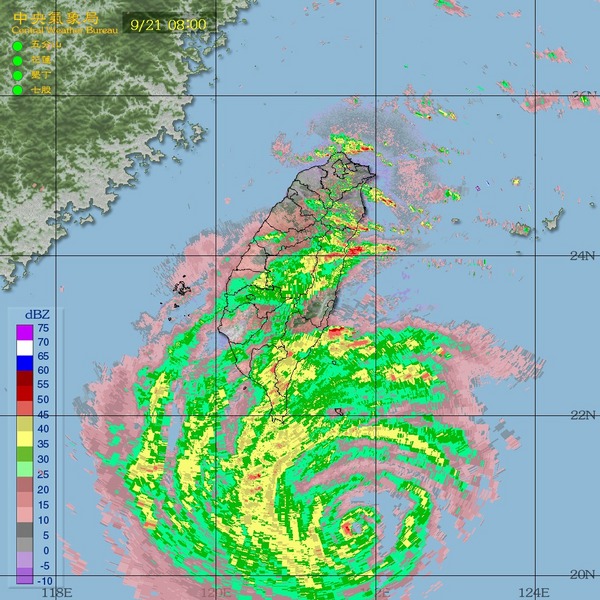 Typhoon Usagi
Typhoon Usagi.
On Friday Usagi was a Category 4 storm, with 130-160 mph winds, carving
out 48 foot seas in the Luzon Straight. Usagi should weaken into a
Category 2 typhoon (same thing as a hurricane) before coming ashore near
Hong Kong late Sunday, Hong Kong time - still capable of extensive
damage and storm surge flooding.
Underwater "Glider" Robots Aid Quest For Better Hurricane Predictions.
I had no idea NOAA was doing this - using underwater drones to collect
real-time ocean information to input more accurate, timely data into the
models. Pretty amazing. Here's a clip from
International Business Times: "
Not
all storm chasers are men in large vehicles careening down
tornado-filled highways. Some, in fact, are underwater robots that gulp
down water and spew it out again to fuel their path through the ocean.
Such “gliders” are key to compiling better hurricane forecasts,
according to the U.S. National Oceanic and Atmospheric Administration.
On Thursday, NOAA announced it is putting 15 gliders out to sea off
coasts from Georgia to Nova Scotia. The gliders can operate autonomously
for up to eight weeks during the Atlantic storm season in the fall. On
their voyages, the gliders will make observations on ocean temperature,
salinity, ocean currents and the sounds of fish and sea mammal
migrations. Rutgers University researchers are managing the gliders
themselves, but the data will be shared with NOAA, the U.S. Navy and
others..."
* more details on this "gliders" from
Rutgers. I need one of these for Pelican Lake.
From Boulder, Colorado: Notes On A Thousand-Year Flood.
Here's a snippet of a harrowing first-person experience with last
week's historic floods along Colorado's Front Range, reported at
The Atlantic: "...
The
damage to our neighborhood is stark. Driveway-sized dumpsters sit
everywhere. One has labeled a pile "CONTAMINATED," to discourage
dumpster diving in belongings covered with fecal matter, I suppose.
Generators power pumps shooting sewer water out of people's basements
through fire hoses. Down the street, a neighbor's sewer line collapsed.
The street is filled with cleanup crew trucks and porta-potties. All the
family's belongings are strewn over the yard, like a sodden eviction.
Tomatoes have ripened and rolled away. The woman who owns the home sits
outside, sorting through wet pictures, flicking them severely onto the
ground, her expression the most extreme frown I've ever seen. There is
no emoticon for her emotion—a mixture of anger, sadness, and disgust. I
want to tell her I’m sorry, but she doesn't look up, so I leave her
alone..."
Photo credit above: "
A stranded home near Golden, CO on September 12" (Rick Wilking/Reuters).
Why We Don't Design Our Cities To Withstand 1 in 1,000 Year Floods. Here's an excerpt of a very interesting article from
Gizmodo: ..."
Nothing
that you can build is ever going to prevent all flooding," says Dr.
Josephine Axt, the chief of planning for the Los Angeles District of the
U.S. Army Corps of Engineers, which manages levees, dams and other
urban river projects across the country. "If you get a big enough storm
it doesn't matter what dam or channel you have, it can be overcome." The
Corps of Engineers works is doing so by evaluating its projects on a
cost-risk basis, says Kerry Casey, a senior hydraulic engineer. "We're
trying to find the best project we can build that absorbs the risk
requirement at the best cost..."
Image credit above: Gizmodo. "
Satellite
imagery by NASA shows Colorado's Front Range before and after the
floods. Dark blue and black are floodwaters. (The images have ben
artificially colored)."
Colorado Flooding: After The Deluge.
The Atlantic has a remarkable series of photos that really bring home the magnitude of the flooding disaster; here's an excerpt: "
Following
days of record-setting rainfall and historic flooding across Colorado's
Front Range, skies have cleared, and the recovery has begun. The number
of people still unaccounted for has dropped to about 200, as helicopter
teams are fanning out across the foothills in the largest aerial rescue
operation since Hurricane Katrina in 2005. Colorado authorities coping
with the aftermath are now preparing possible evacuations of prairie
towns in danger of being swamped as the flood crest moves downstream.
Tens of thousands of homes were damaged or destroyed, a problem
exacerbated by the fact that only about 1 percent of Colorado homeowners
have flood insurance..."
Photo credit above: "
A
view of a residential area destroyed by heavy rains, with some areas
receiving as much as 18 inches in a 24-hour period in Boulder, Colorado,
on September 14, 2013."
(U.S. Army/Staff Sgt. Wallace Bonner)
Fire And Rain, Colorado Edition.
The combination of a 14 year drought and recent wildfires may have made
a bad situation much worse. Here's a clip from a story at
Mother Jones: "...
Still,
the compounded damages from the cycle of wildfire and flooding could
very well be amplified on the Front Range in coming years. Climate
models foretell larger regional storms, and scientists have also
predicted bigger, more intense wildfires
in Colorado's future. "What is that going to mean for the people living
in the mouth of these areas?" wonders Hyde. If the 100-year flood that
turned Boulder inside out last week is any indication, living at the
base of the Rockies—while arguably worth it—isn't getting any less
complicated."
Photo credit above: "Flames from the High Park Fire west of Ft. Collins in June 2012." US Department of Agriculture.

Into The Wildfire.
Here's a clip from an article examining how residents of the west are
coping with increasingly large and devastating fires, and what new tools
and technologies may help in the years ahead, from the
New York Times Magazine: "
Lassen
Volcanic National Park, in Northern California, consists of more than
100,000 acres of wilderness and woodlands surrounding Lassen Peak, a
volcano named for a pioneer and huckster who guided migrants through the
area, that last blew its top in 1915, before anybody knew it was an
active volcano. Last summer the park, like much of the West, was in the
midst of a yearlong drought — which could be more accurately described
as the continuation of a decade-long drought that had merely been less
severe for a couple of years. A forecast of thunderstorms might seem
like welcome news for a firefighter in charge of so many acres of dry
forest — parts of the park can get so hot and dry during the summer that
rain evaporates before it reaches the trees — but Mike Klimek, the
firefighter in charge of the park on July 23, 2012, knew better..."
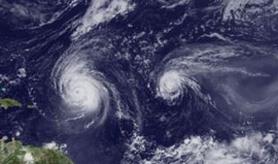
Atlantic Hurricane Numbers "Linked To Industrial Pollution".
Is aerosol pollution making clouds brighter, dampening hurricane
formation over the Atlantic in the process? Here's a clip from a recent
press release from the
UK Met Office: "The paper,
published in Nature Geoscience,
suggests aerosols may have suppressed the number of Atlantic hurricanes
over the 20th Century and even controlled the decade-to-decade changes
in the number of hurricanes. Researchers found that aerosols make clouds
brighter, causing them to reflect more energy from the sun back into
space. This has an impact on ocean temperatures and tropical circulation
patterns, effectively making conditions less favourable for hurricanes.
This interaction between aerosols and clouds is a process that is now
being included in some of the latest generation climate models..."
11 Most Annoying Things About Local TV News. Hey, it's not My list - I LOVE local TV news! This is from a Milwaukee TV reporter, quoted at
TVSpy. How many of these do you agree with? "...
So
grab a coffee, take a deep breath and see if you’re guilty of any of
these. For the record, this TVSpy writer admits to overusing number
nine.
Here’s the list. Now get off my lawn!
■Pump Patrol: Let me see if I understand this correctly — I should waste gas driving across town to save a few pennies when I buy more gas?
■Traffic reports: Thanks, but if I’m watching, I’m already home.
■Handoffs: Scripted
back-and-forth transitions in which one studio anchor reads one
sentence and another studio anchor reads the next sentence, and so on.
This dramatic device gives the impression of a performance being given.
■Using a newscast I’m
watching to tease a story in an upcoming newscast I won’t be watching.
If there’s time to promote it, there’s time to report it..."
"You
need to build an ability to just be yourself and not be doing
something. That's what the phones are taking away. The ability to just
sit there ... that's being a person." - Louis CK (on Conan Thursday
night)
SATURDAY: Cool sunshine. Dew point: 39. Winds: NW 10. High: 64
SATURDAY NIGHT: Clear and cool. Low: 44
SUNDAY: Sunny and milder. Winds: SE 10-20. High: 71
MONDAY: Partly sunny, mild breeze. Wake-up: 52. High: 73
TUESDAY: More clouds, stray shower? Wake-up: 55. High: 69
WEDNESDAY: Plenty of lukewarm sunshine. Wake-up: 53. High: 75
THURSDAY: Windy, milder than average. WaKe-up: 58. High: 79
FRIDAY: Warm start, late thunder. Wake-up: 63. High: 82
Climate Stories....
After The Storms, A Different Opinion On Climate Change.
When it hits close to home, or impacts your home, family and friends,
people may have a slightly different perspective (and willingness to
dive into the science). Here's a clip from
Live Science: "
Extreme
weather may lead people to think more seriously about climate change,
according to new research. In the wake of Hurricanes Irene and Sandy,
New Jersey residents were more likely to show support for a politician
running on a "green" platform, and expressed a greater belief that
climate change is caused by human activity. This research, published in
Psychological Science, a journal of the Association for Psychological
Science, suggests that traumatic weather events may have the power to
shift people's automatic attitudes -- their first instincts -- in favor
of environmentally sustainable policies..."
Climate Skeptic Groups Launch Global Anti-Science Campaign. Details from
Bloomberg: "
Conservative
groups at the forefront of global warming skepticism are doubling down
on trying to discredit the next big report by the Intergovernmental
Panel on Climate Change (IPCC). In recent weeks, they've been cranking
out a stream of op-eds, blogs and reports to sow doubt in the public's
mind before the report is published, with no end in sight. "The goal is
to inform the public, scientific community and media that the upcoming
IPCC report doesn't have all the science to make informed judgments,"
said Jim Lakely, a spokesman for the Heartland Institute, a libertarian think tank based in Chicago that has been spearheading the efforts..."
Photo credit above: "Indian
Nobel Peace Price laureate and Chairman of the Intergovernmental Panel
on Climate Change (IPCC), Rajendra Kumar Pachauri, speaks during a press
briefing about the Task Force on National Greenhouse Gas Inventories at
the United Nations in Geneva, Switzerland on June 7, 2012." Photographer: Martial Trezzini/EPA.
Obama's Coming Climate Crackdown.
Politico has the story - here's a clip: "...
That’s
if everything goes right for the administration: If the EPA rules
aren’t weakened or killed in court. If Congress or a future Republican
president doesn’t roll them back. And if it’s not too late to head off
the worst effects of the rising seas and worsening droughts that climate
scientists warn are already starting to ravage large swaths of the
planet. It’s a long game that is likely to bridge multiple presidencies.
Experts have said
the rules may not start reducing power plants’ emissions until 2018.
“We’re not going to solve this problem in three years,” said Elliot
Diringer, a former environmental aide in the Clinton White House who’s
now executive vice president at the Center for Climate and Energy
Solutions. “This is a problem that is decades in the making and will
continue for years to come...”
The Real Global Warming Signal. Here's a clip from an interesting post at Tamino's
Open Mind blog: "
Many
different factors affect Global temperature. Fake “skeptics” like to
claim that mainstream climate scientists ignore everything but
greenhouse gases like CO2, when in fact it’s mainstream climate
scientists who identified those other influences. Natural factors cause
temperature fluctuations which make the man-made global warming signal
less clear, fluctuations which are often exploited by fake skeptics to
suggest that global warming has paused, or slowed down, or isn’t
happening at all. A new paper by Foster & Rahmstorf
accounts for some of those other factors, and by removing their
influence from the temperature record makes the progress of global
warming much more clear..."
America's Dirtiest Power Plants: Their Oversize Contribution To Global Warming And What We Can Do About It.
Environment Minnesota has the story - here's the introduction: "
Global
warming is one of the most profound threats of our time, and we’re
already starting to feel the impacts – especially when it comes to
extreme weather. From Hurricane Sandy to devastating droughts and deadly
heat waves, extreme weather events threaten our safety, our health and
our environment, and scientists predict things will only get worse for
future generations unless we cut the dangerous global warming pollution
that is fueling the problem. Power plants are the largest source of
global warming pollution in the United States, responsible for 41
percent of the nation’s production of carbon dioxide pollution, the
leading greenhouse gas driving global warming. America’s power plants
are among the most significant sources of carbon dioxide pollution in
the world. The 50 most-polluting U.S. power plants emit
more than 2 percent of the world’s energy - related carbon dioxide
pollution – or more pollution than every nation except six worldwide..."
Fed Up With Climate Change Apathy.
U.S. News has the story - here's a clip: "...
While members of Congress understandably advocated in the hearing
for the energy and job welfare of their districts, what was missing was
the constituent voice. It turns out that their constituents are raring
to do something on global warming. A report released last month on how
the American public is thinking and talking about climate change – based
on polling done earlier in 2013
by the George Mason University Center for Climate Change Communication
and the Yale Project on Climate Change Communication – may startle some
members. The most telling trend: there's a growing segment of the
American public who is ready and willing to engage in nonviolent civil
disobedience against the entities – private or public – that are making
global warming worse. But in more general terms, regarding what's
influencing American minds and how they're being influenced, here are
some new and interesting findings..."
Could Fracking Technology Eventually Pump Greenhouse Gases Deep Underground?
The idea may not be as crazy as it sounds. The arc of technology moves
quickly - who would have thought just 15 years ago that people could
drill for shale oil horizontally miles underground? Here's an excerpt of
an abstract from
Environmental Science and Technology: "
Hydraulically
fractured shale formations are being developed widely for oil and gas
production. They could also represent an attractive repository for
permanent geologic carbon sequestration. Shales have a low permeability
but they can adsorb an appreciable amount of CO2 on fracture surfaces.
Here, a computational method is proposed for estimating the CO2
sequestration capacity of a fractured shale formation and it is applied
to the Marcellus shale in the Eastern United States..."
Flooding And Fracking In Colorado: Double Disaster.
Historic flooding + fracking is a potentially bad combination, as many
residents of Colorado discovered last week. Here's a clip from a story
at
Rolling Stone: "...
Thanks
to a recent boom in natural gas production atop the Wattenberg Field,
Colorado is home to some 50,000 oil and gas wells. It's not yet known
just how many were impacted by the flooding, but early reports suggest a
significant number. "We have thousands of wells impacted with anything
from standing water to flowing water," a spokeswoman for the Colorado
Oil and Gas Association told CBS News.
Industry spokespeople and state regulators say it's too soon to know
the impact, including whether or how much the flooding introduced
hydrocarbons and chemicals into surface water. Some have said that many
wells were safely closed before the flooding and that activists are
overstating the danger of contamination..."
Photo credit above: "
In
this Wednesday, Sept. 18, 2013 photo, flood waters recede from an oil
and gas well pump site near Greeley, Colo. Colorado's floods shut down
hundreds of natural gas and oil wells, spilled oil from one tank and
sent inspectors into the field looking for more pollution. Besides the
environmental impact, flood damage to roads, railroads and other
infrastructure will affect the region’s energy production for months to
come. Analysts warn that images of flooded wellheads will increase
public pressure to impose restrictions on drilling techniques such as
fracking." (AP Photo/Ed Andrieski)
* "
These 5 Things Need To Happen Before Electric Cars Really Go Mainstream".
The Washington Post has the story.
The Many Small Ways Americans Are Adapting To Climate Change.
This will be a growing theme in the years to come, not only trying to
mitigate greenhouse gas emissions, but adapting to changes already in
the pipeline. Details on how some communities are already adapting in
this excerpt from
The Atlantic: "...
In March of this year, a Gallup poll
highlighted an interesting tension in American thinking on global
warming: While a majority of respondents said they believe global
warming has already begun, a majority also said they don’t expect to
suffer any hardships from global warming within their lifetimes. What
the survey didn’t ask was how many people across the country are already
reacting to rising temperatures—and preparing for those ahead. This
past summer, twenty-somethings Allie Goldstein and Kirsten Howard
took a road trip to document stories of what they call “climate
resilience” – examples of individuals and communities finding creative
ways to adapt to hotter summers, stronger storms, bigger wildfires,
rising sea levels, and more. They visited 31 states and offset their
minivan’s carbon emissions by purchasing carbon credits from Terrapass...."
Photo credit courtesy of Allie Goldstein and Kirsten Howard.
You Genuinely Have To Be An Idiot To Think That Arctic Sea Ice Is Recovering. Subtle as a brick. And talk of a "recovery" of Arctic sea ice is a bit premature, it seems. Here's a clip from a story at
The Telegraph: "
There
are serious debates to be had about climate change, and what we should
do about it. Whether or not the Arctic ice is retreating is not one of
them. This is going to be a brief post, because other people – notably Phil Plait, the "Bad Astronomy" science blogger, and Martin Robbins, at Vice
– have written about it at length, pointing out the fundamental
nonsense of the "sea ice is recovering" brigade, and doing it better
than I can. I just thought it was worth making it clear here, as
well....The bit in red is the "recovery" of this year. If you think that
means that things are getting better, you genuinely must be an idiot.
It's not. The overwhelming long-term trend is still towards much less
ice..."
Four Facts: Arctic Sea Ice Extent In 2013. Matt Daniel has some good information in this post at
earthsky.org; here's the introduction: "
Arctic
sea ice tends to reach a minimum in mid-September each year, and, over
the past several weeks, there have been a few articles circulating via
social media about the extent of Arctic sea ice in 2013. These articles
note something that is true: there is substantially more ice in the
Arctic this year than observed at sea ice minimum last year. The
articles, however, draw a mistaken conclusion that 2013′s greater sea
ice extent (in contrast to 2012) means our climate is warming no more.
In this post, I’ll analyze the melting that is occurring in the Arctic
in 2013. As you probably know, when it comes to analyzing climate
features, you have to look over a series of decades instead of one year
to understand out the true state of Arctic sea ice extent in 2013. Click
the links below to learn more about Arctic sea ice in the summer, and
about 2013′s ice extent."
Graphic credit: Climate Central.
No, Arctic Sea Ice Has Not Recovered, Scientists Say.
Aerial coverage of ice has "recovered" from last September's record
low, but the volume and thickness continues to be in decline. Here's a
clip from an article at
Climate Central that puts things into stark perspective: "...
According
to data from September 18, Arctic sea ice extent was about 1.97 million
square miles, which is well above the level observed on the same date
last year, yet still well below the 1981-2010 average, according to the National Snow and Ice Data Center (NSIDC)
in Boulder, Colo. An official announcement of the sea ice minimum is
expected to come from the NSIDC within the next few days. The long-term decline in sea ice,
both in terms of the extent of sea ice cover as well as its thickness,
is largely due to warming caused by human activities and natural
variability, as the Arctic is warming at nearly twice the rate of the
rest of the globe. As has been the case in recent years, the sea ice at
the end of the 2013 melt season is unusually thin, which makes it more
susceptible to the influence of weather systems..."
Image credit above: Climate Central. "Arctic sea ice loss during the 2013 melt season was equivalent to losing the entire area of states from Tennessee to Maine."
Colorado Floods And Climate Change: The Elephant In The Room. Here's an excerpt from a story at
Huffington Post: "
There
have been many words to describe the flooding in Colorado over the past
week: horrific, catastrophic, unprecedented and biblical are some. To
illustrate the scale of the disaster, some numbers:
• Over 18" of rain have fallen in the Boulder area since last Wednesday.
• 7-11" of rain fell during a single 24-hour period.
• From north to south, 200 miles of Colorado were hit.
• 17 counties were affected.
• 30 bridges were destroyed.
• Over 1500 homes were destroyed and 18,000 damaged.
• Over 11,000 people were evacuated.
• Over 600 people still missing and
• 8 people confirmed dead.
The flooding has been classified as a 1000-year event,
meaning there was only a tenth of 1 percent probability (0.1 percent)
that it would happen in a given year. When an event this unusual and
extreme happens these days, one of the first questions people ask is:
"Was it because of climate change?"
Photo credit above: "
This
photo shows flood-damage at the River Bend Mobile Home Park in Lyons,
Colo., on Thursday, Sept. 19, 2013. The recovery process has begun along
the front range as people clean out flooded homes and businesses. Local
governments are starting to clear debris and repair infrastructure." (AP Photo/Chris Schneider).
Administration Presses Ahead With Limits On Emissions From Power Plants. Here's a clip from a story at
The New York Times: "
A year after a plan by President Obama
to limit greenhouse gas emissions from new power plants set off angry
opposition, the administration will announce on Friday that it is not
backing down from a confrontation with the coal industry and will press
ahead with enacting the first federal carbon limits on the nation’s
power companies. The proposed regulations, to be announced at the
National Press Club by Gina McCarthy, the administrator of the
Environmental Protection Agency, are an aggressive move by Mr. Obama to
bypass Congress on climate change with executive actions he promised in his inaugural address this year..."
Photo credit above: Matt Brown/Associated Press. "President Obama has told officials that he wants limits on all plants, like one in Colstrip, Mont., by the time he leaves office."
What's The Climate Change Context Behind The Colorado Floods? Here's an excerpt of a good explainer from
E&E Publishing: "...
According
to both Hoerling and meteorologists with the National Weather Service,
the conditions that led to this widespread, long-lasting rainfall
stemmed from a moist tropical air mass from the Gulf of Mexico that was
displaced into the region by air coming from the south. When the air
hits the mountains, it is moved upward rapidly and cools, causing
precipitation. An upper-level high-pressure system in the area to the
west pinned this weather in for about a week, so the rain kept falling.
What role does climate change play in any of this? Hoerling said in this
storm, the amount of precipitable water measured in the atmosphere was
record-high. Global warming is known to increase the amount of moisture
in the atmosphere, although the effect is not large -- perhaps a 3 to 5
percent increase in the precipitable water would be a "reasonable
estimate," he said. But what really caused the rain to fall the way it
did, for the amount of time it did, was the unusual atmospheric
circulation..."
Photo credit above: "
This Sept.
17, 2013 photo provided by Ecoflight shows the result of flash floods
that inundated parts of the booming oil and natural gas patch in
northern Colorado's Weld County. Hundreds of natural gas and oil wells
along with pipelines are shut down by flooding in this key energy region
in Colorado, as state and federal inspectors are just beginning to
gauge the damage and looking for contamination from inundated oil fields." (AP Photo/Ecoflight, Jane Pargiter)
Climate Change Spells Trouble For Anglers. Here's a clip from an article at
National Geographic: "...
A new report,
published September 4 by the National Wildlife Federation (NWF)—one of
the country's largest environmental groups—backs up the anecdotal
evidence and explains the variety of threats that climate change poses.
Besides the closures themselves—which are typically the result of
droughts and earlier than normal melt of alpine snowpack—many rivers are
simply getting warmer. According to the NWF report, half of the major
American rivers surveyed in a 2010 study experienced "significant
warming trends over the past 50 to 100 years." Fish are sensitive to
temperature, explained Jack Williams, a senior scientist with the
conservation group Trout Unlimited
and a co-author of the NWF report, who describes a massive geographical
shift in fish species already underway. "Already, native trout have
been pushed around," Williams wrote in an email..."
Photo credit above: "An fisherman in Montana enjoying the river." Photograph by Jeff Hornbaker, Corbis.
Is Global Warming In A Hiatus? Here's a snippet from a long but interesting article from
The Conversation: "
On September 27 2013 the 5th Assessment Report by the Intergovernmental Panel on Climate Change
(IPCC) will be released. One part of this report will address the
so-called “warming hiatus”. This is the argument that warming has
stopped, with the further assertion in some quarters that we therefore
have nothing to worry about in the future. It is a fact, based on
observations of air temperature, that the rate of global warming
measured as surface air temperature has slowed over the past 15 years.
The last decade is still the warmest in the past 150 years...."
Photo credit above: "With low solar activity, a double-dip La Nina and more particles in the air, it should be much colder than it is." Les Chatfield/Flickr.
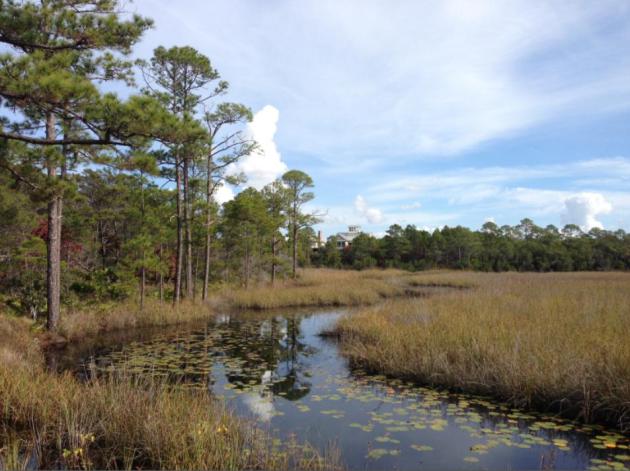


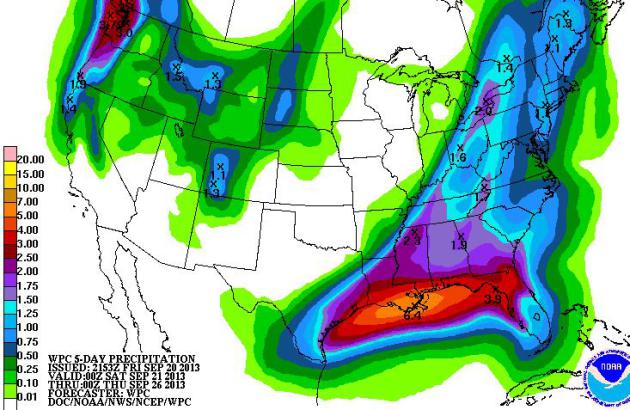
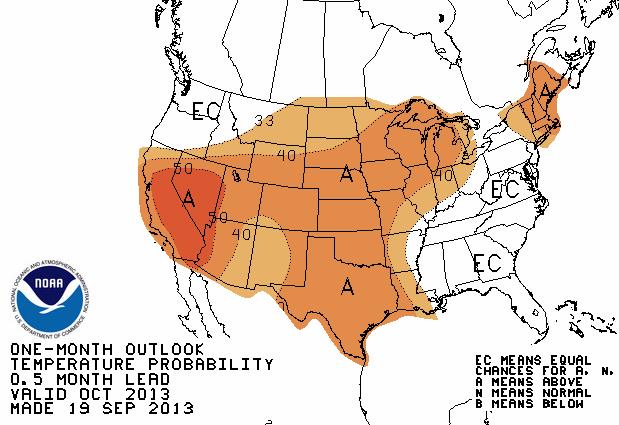
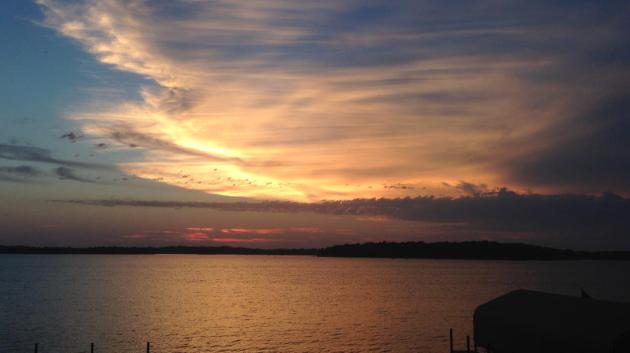

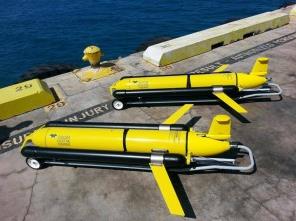



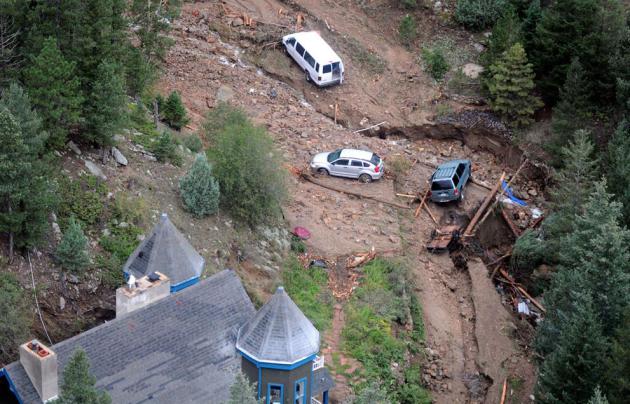
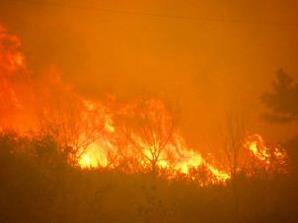


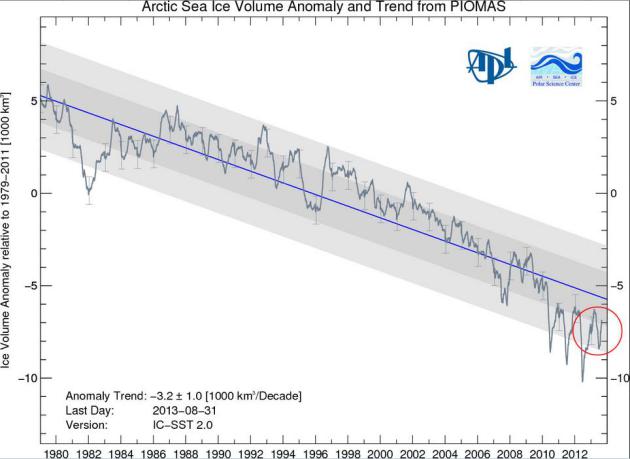

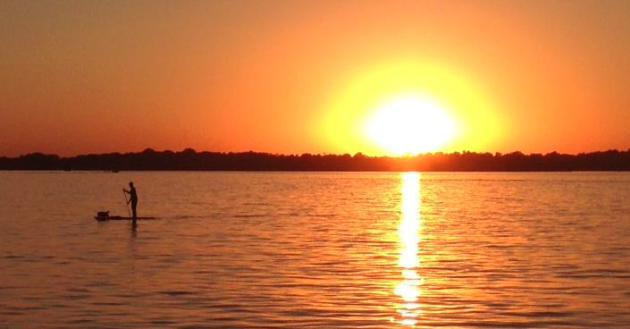
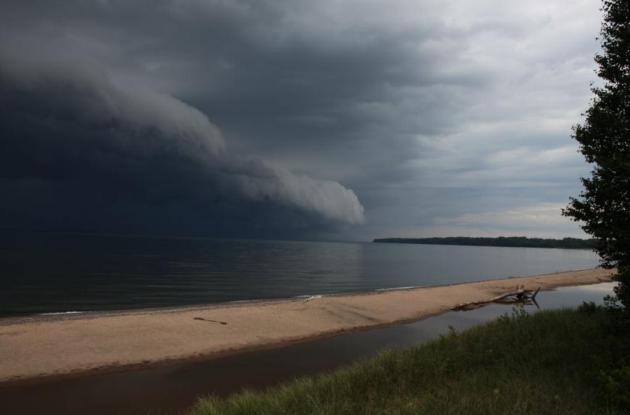
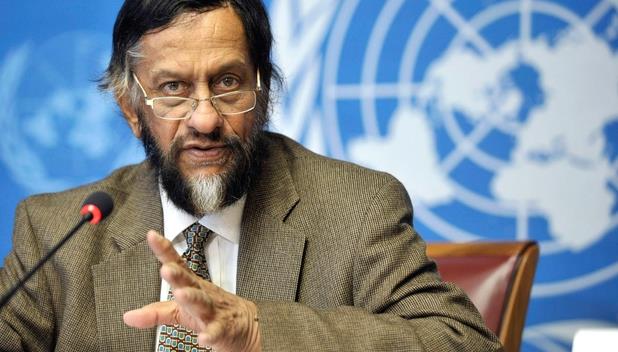

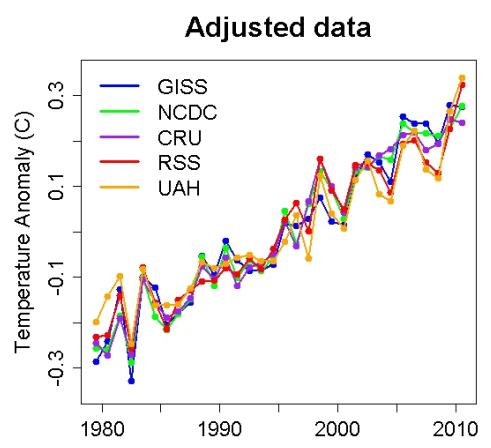
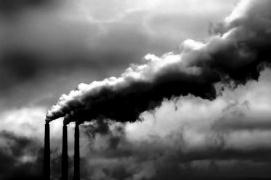


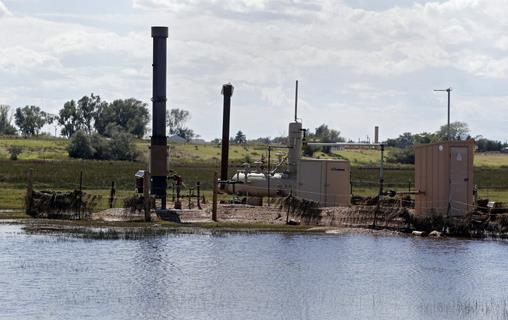



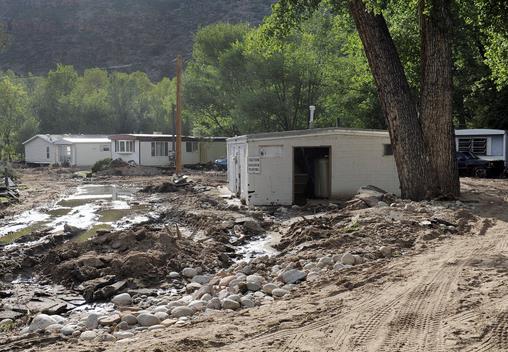
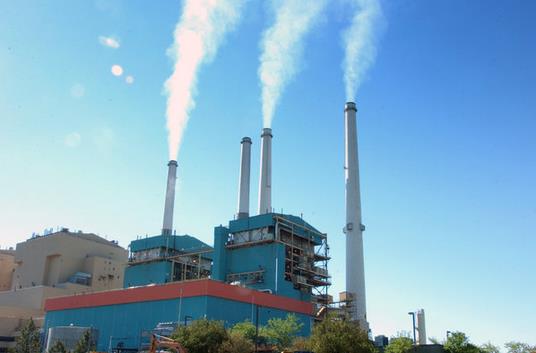

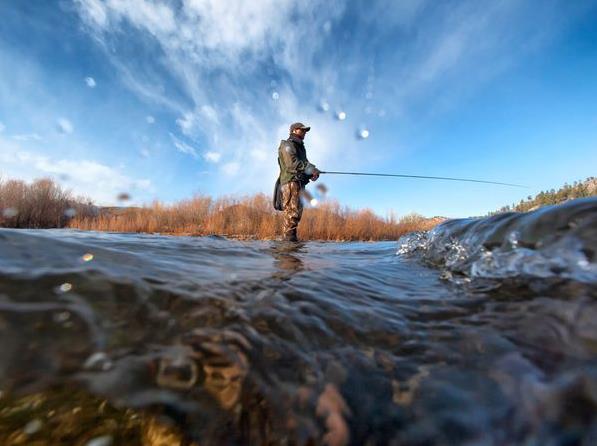
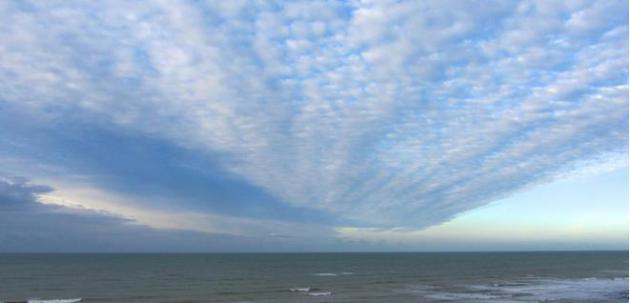
I am very happy to find this blog.Thanks for creating the page! Im positive that it will be very popular. It has good and valuable content which is very rare these days.
ReplyDeletehow to treat seasonal allergies